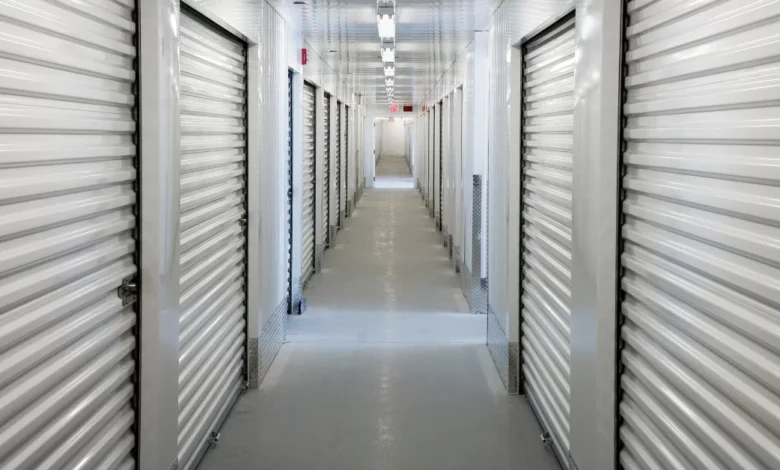How Extreme Temperatures Can Ruin What’s in Your Storage Unit

Extreme temperatures can severely damage stored items, from warping furniture to ruining photos, often going unnoticed. Understanding these risks and taking precautions can prevent costly mistakes and protect your valuables. This guide explains how temperature affects storage and how to safeguard your belongings.
Understanding Temperature Fluctuations
Storage units experience dramatic temperature swings throughout the year. Summer temperatures can soar above 100°F in many regions, while winter can plunge units below freezing. These extremes create a hostile environment for most household items.
Heat damage occurs when temperatures rise consistently above 80°F. High heat causes materials to expand, adhesives to break down, and moisture to evaporate rapidly. This leads to cracking, warping, and brittleness in many materials.
Cold damage happens when temperatures drop below 50°F regularly. Cold causes materials to contract and become brittle. Freezing temperatures can cause liquids to expand and burst containers, while also making plastics prone to cracking.
Humidity changes often accompany temperature fluctuations. Hot air holds more moisture than cold air, so as temperatures swing, humidity levels fluctuate dramatically. This creates condensation, which leads to mold, mildew, and rust.
The most destructive scenario occurs when temperatures cycle repeatedly between hot and cold. This constant expansion and contraction stresses materials beyond their limits, accelerating deterioration significantly.
See also: How Active Release Techniques Work to Relieve Pain and Improve Mobility
Specific Items at Risk
Electronics and Appliances
Electronics are particularly vulnerable to temperature extremes. Heat can melt internal components, warp circuit boards, and cause batteries to leak corrosive chemicals. Televisions, computers, and gaming systems can suffer permanent damage when stored in hot conditions.
Cold temperatures pose different risks. Condensation can form on internal components when cold electronics warm up, potentially causing short circuits. LCD screens become especially brittle in cold conditions and may crack from minor vibrations.
Documents and Photos
Paper-based items deteriorate rapidly in extreme temperatures. Heat makes paper brittle and can cause inks to fade or run. Photographs are especially sensitive—heat can cause the emulsion to separate from the backing, ruining irreplaceable memories.
Cold temperatures make paper more susceptible to tearing and can cause adhesives in photo albums to fail. Humidity fluctuations that accompany temperature changes can cause documents to curl, stick together, or develop mold spots.
Wooden Furniture
Wood expands and contracts with temperature changes, leading to cracks, splits, and joint separation. Antique furniture with traditional wood glues is particularly vulnerable, as older adhesives become brittle with age and temperature stress.
Veneered furniture faces additional risks. The thin veneer layer can separate from the underlying wood when expansion rates differ, creating bubbles and permanent damage that’s expensive to repair.
Clothing and Textiles
Fabrics suffer in multiple ways from temperature extremes. Heat can cause synthetic materials to melt or become permanently misshapen. Natural fibers like wool and cotton can shrink, while leather goods may crack or become stiff.
Temperature fluctuations create ideal conditions for pest infestations. Moths, carpet beetles, and other fabric-damaging insects thrive in warm conditions and can destroy clothing collections over time.
Musical Instruments
Instruments are among the most temperature-sensitive items people store. Wooden instruments like guitars and violins can crack when humidity drops or temperatures fluctuate. Piano strings can snap from temperature stress, while wind instruments may develop leaks in their joints.
Even small temperature changes can affect an instrument’s tuning and playability, potentially requiring expensive repairs or professional restoration.
Climate-Controlled Storage: Your Best Defense
Climate-controlled storage units maintain consistent temperatures typically between 55°F and 85°F year-round. These units also regulate humidity levels, usually keeping them between 30% and 50%.
The controlled environment eliminates the dramatic temperature swings that cause the most damage. Your wooden furniture won’t expand and contract repeatedly, electronics stay within safe operating ranges, and documents remain stable.
Climate-controlled units also provide protection from humidity-related problems. Consistent moisture levels prevent mold growth, reduce condensation, and keep materials from becoming too dry and brittle.
For valuable items, irreplaceable belongings, or anything you plan to store for more than a few months, a climate-controlled storage unit like those available in West Jordan UT, offers the most reliable protection. The additional cost often pays for itself by preventing damage that would be far more expensive to repair or replace.
Tips for Non-Climate Controlled Units
If climate-controlled storage isn’t in your budget, you can still protect your belongings with careful planning and preparation.
Choose your timing wisely. Avoid moving items in and out during extreme weather. The temperature shock from moving items between a hot car and a cold storage unit can cause immediate damage to sensitive items.
Use protective materials. Wrap electronics in anti-static bubble wrap and place them in sealed plastic bags with desiccant packets. Cover furniture with breathable cotton sheets rather than plastic, which can trap moisture.
Create barriers. Place pallets or wooden boards on the floor to keep items off concrete, which can transfer cold and moisture. Use shelving to keep items away from walls that experience the most temperature fluctuation.
Pack strategically. Place the most temperature-sensitive items in the center of your unit, surrounded by less vulnerable belongings. This creates a buffer zone that helps moderate temperature changes.
Monitor conditions. Install a wireless thermometer with data logging capabilities to track temperature and humidity in your unit. This helps you understand the conditions your belongings face and adjust your protection strategies accordingly.
Visit regularly. Check on your stored items at least every few months. Early detection of temperature damage allows you to address problems before they become severe.
Conclusion
Prevent temperature damage in storage by choosing climate-controlled units for valuable items or using proper packing techniques for less critical belongings. Damage often happens gradually and is irreversible, so prevention is key. Assess your items, weigh the risks, and select the right protection to avoid costly surprises later.




